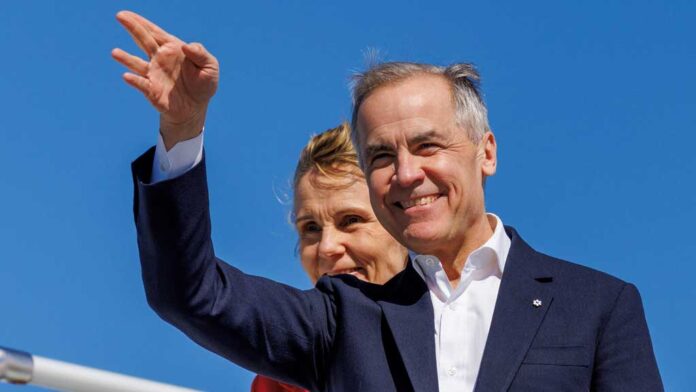Canadian Prime Minister Mark Carney, currently leading in the polls ahead of the April 28 election, reiterated his call on Monday for voters to grant him a strong mandate to respond to U.S. President Donald Trump’s tariff threats.
Carney warned that Trump’s tariffs and annexation rhetoric pose a significant risk to Canada, underlining the urgency of reducing economic dependence on the United States and restructuring the Canadian economy.
“We need a government that has a strong mandate, a clear mandate. We need a government that has a plan that meets the moment,” Carney said at a campaign stop in Charlottetown, located in the Atlantic province of Prince Edward Island.
The 60-year-old former central banker, who only entered politics earlier this year when he became leader of the Liberal Party, presented himself as “someone who knows how to negotiate … (and) how to manage a crisis.”
The Liberal platform, which includes approximately C$130 billion in new spending over the next four years, forecasts a 2025/26 deficit of C$62.3 billion—substantially higher than the C$42.2 billion predicted last December.
Carney succeeded Justin Trudeau, who had served as prime minister for more than nine years and had come under fire from opponents over inflation, high immigration levels, and the housing shortage.
Earlier in the year, the opposition Conservatives were ahead by 20 points, but the Liberals have now overtaken them.
A three-day rolling Nanos poll published Monday shows the Liberals with 43.7% of public support, while the Conservatives trail at 36.3%. The New Democrats, who also compete for center-left voters, were at 10.7%.
If those numbers hold on election day, the Liberals are projected to win a majority of the 343 seats in the House of Commons.
Elections Canada reported that a record 2 million people voted on Friday—the first day of advance polling and a national holiday. About 28 million Canadians are registered to vote.
While federal election turnout historically ranged from 70% to 80% between the 1950s and early 1990s, it has declined in recent years. Only 62.3% of eligible voters participated in the 2021 election.
Darrell Bricker, CEO of Ipsos Public Affairs, commented that the surge in early voting could mean higher overall turnout or may simply reflect successful efforts by political parties to encourage advance voting.
“Too early to say which it is this time,” he wrote in a post on X.
The Nanos poll surveyed 1,289 people on April 17, 19, and 20 and has a margin of error of ±2.7 percentage points, 19 times out of 20.



